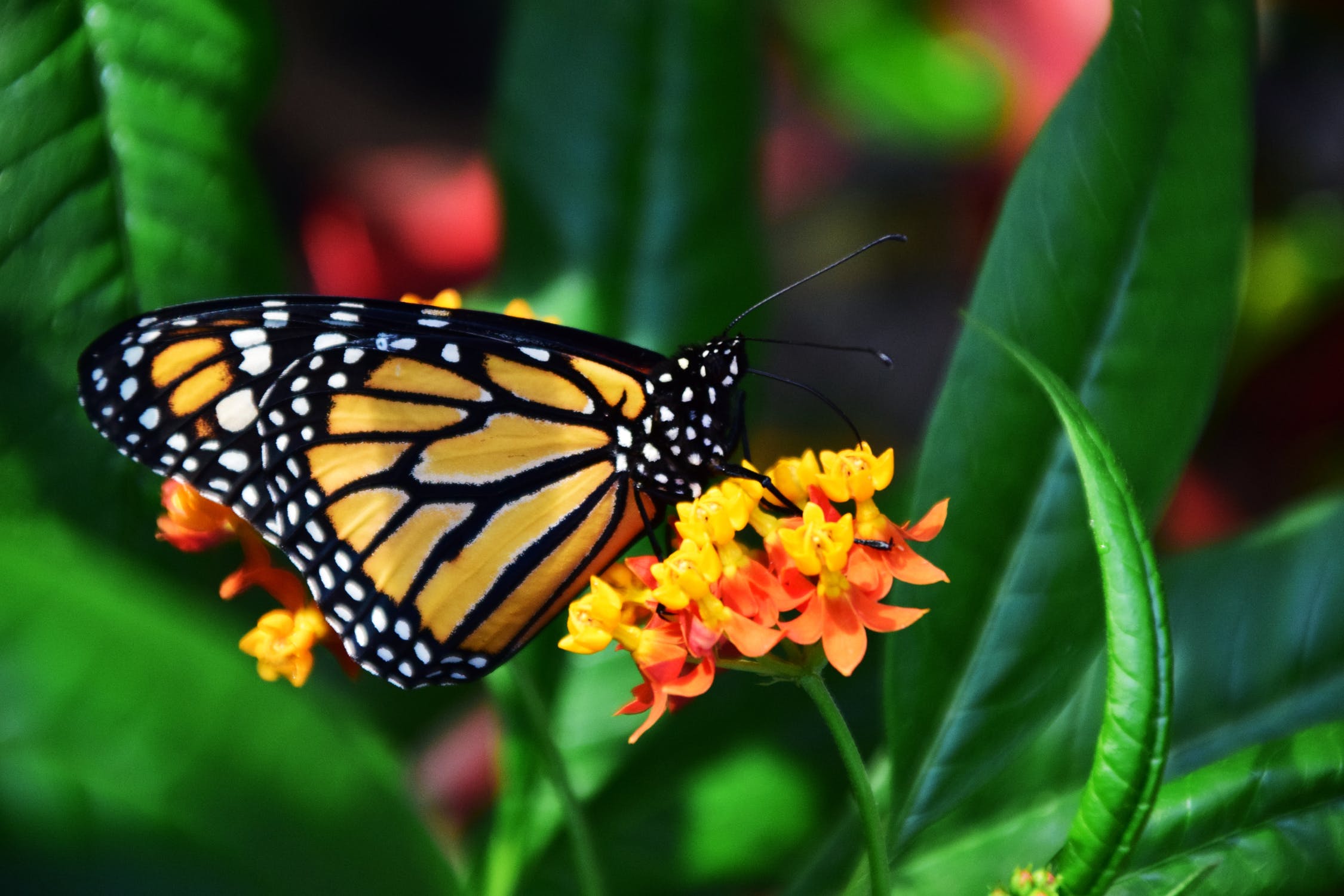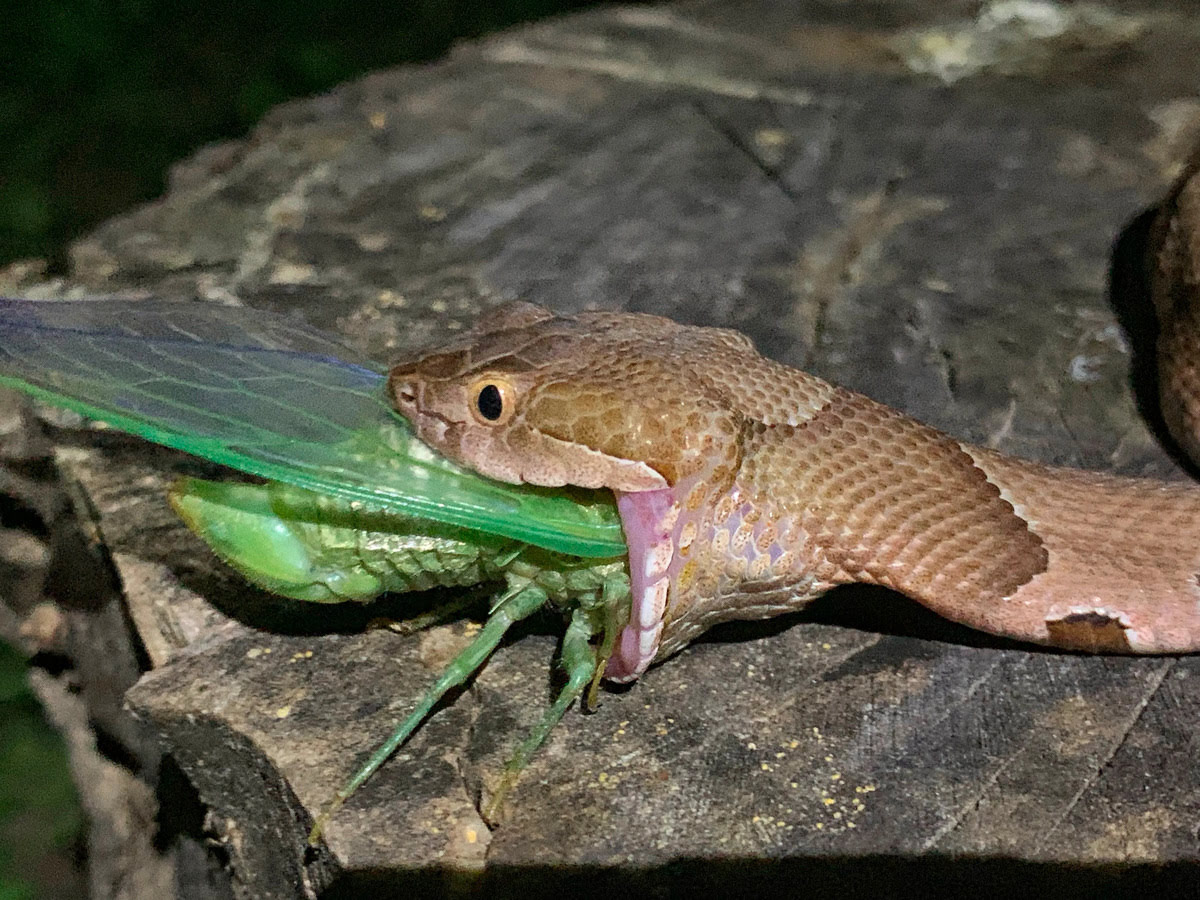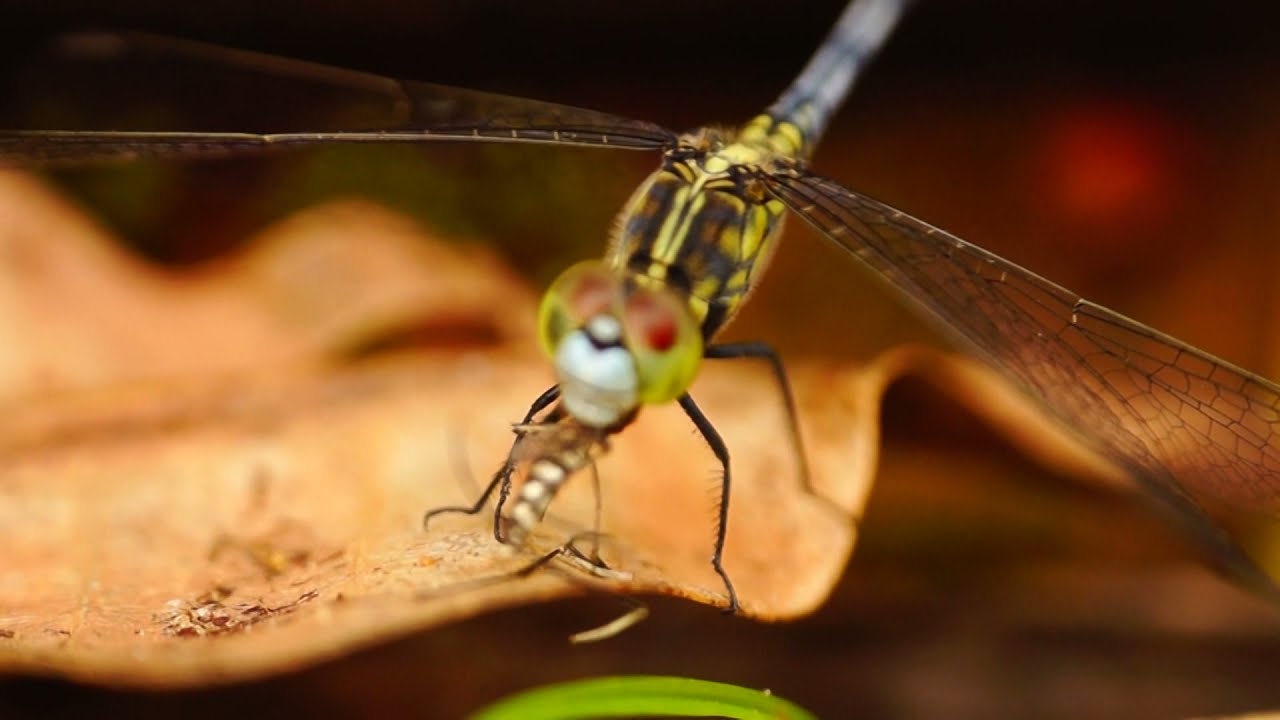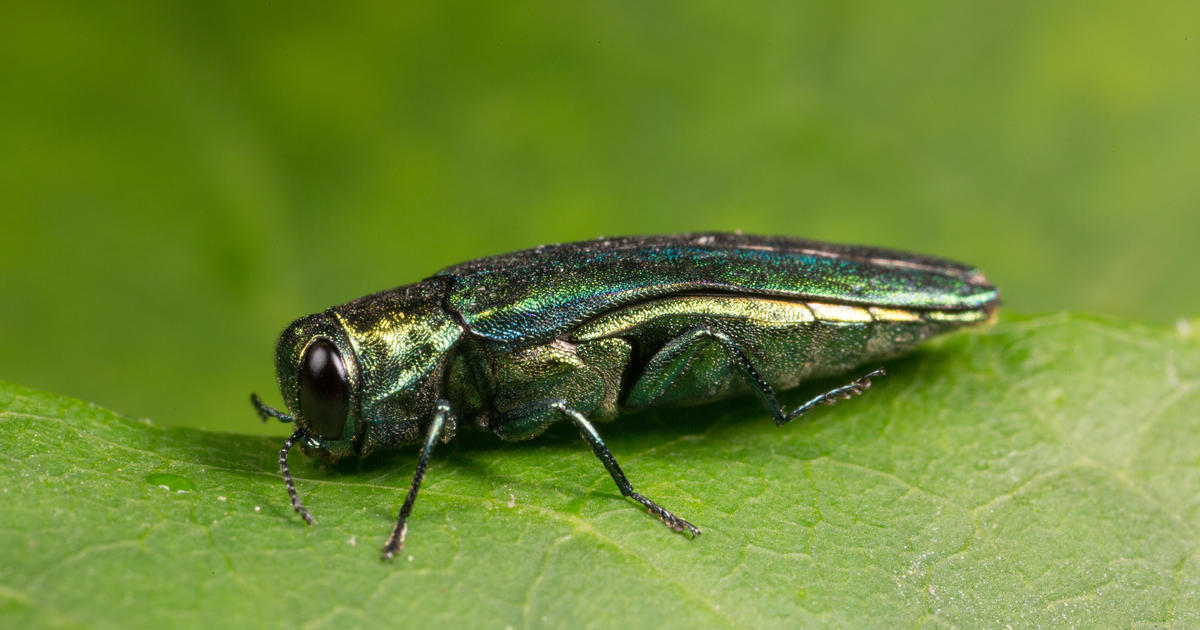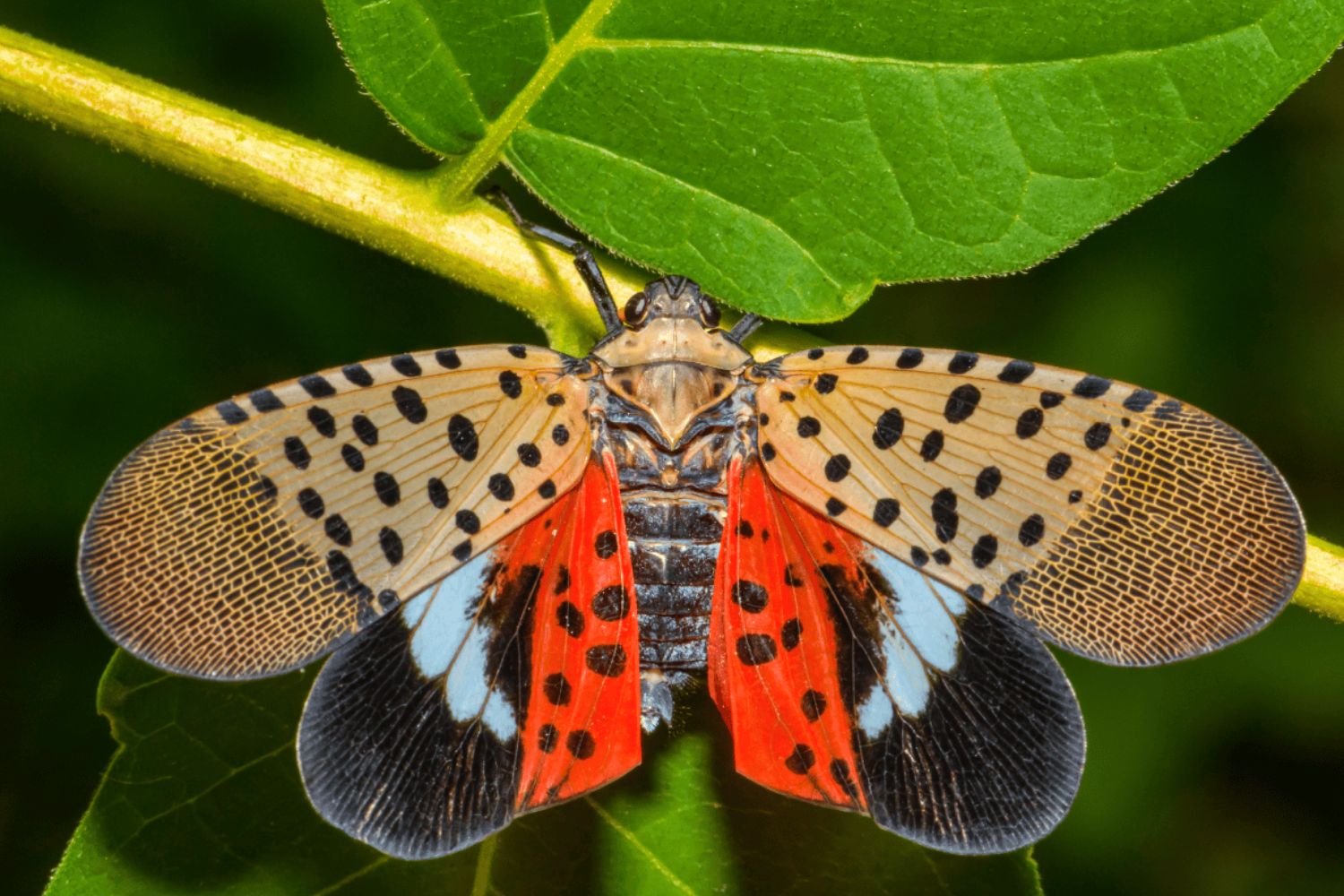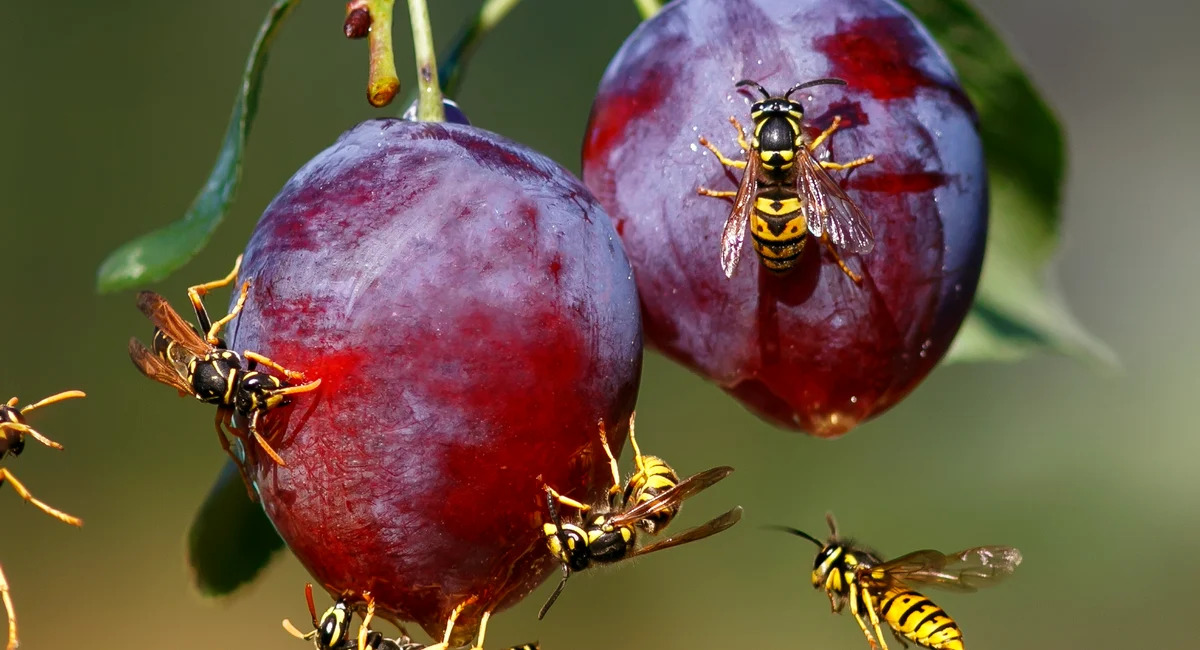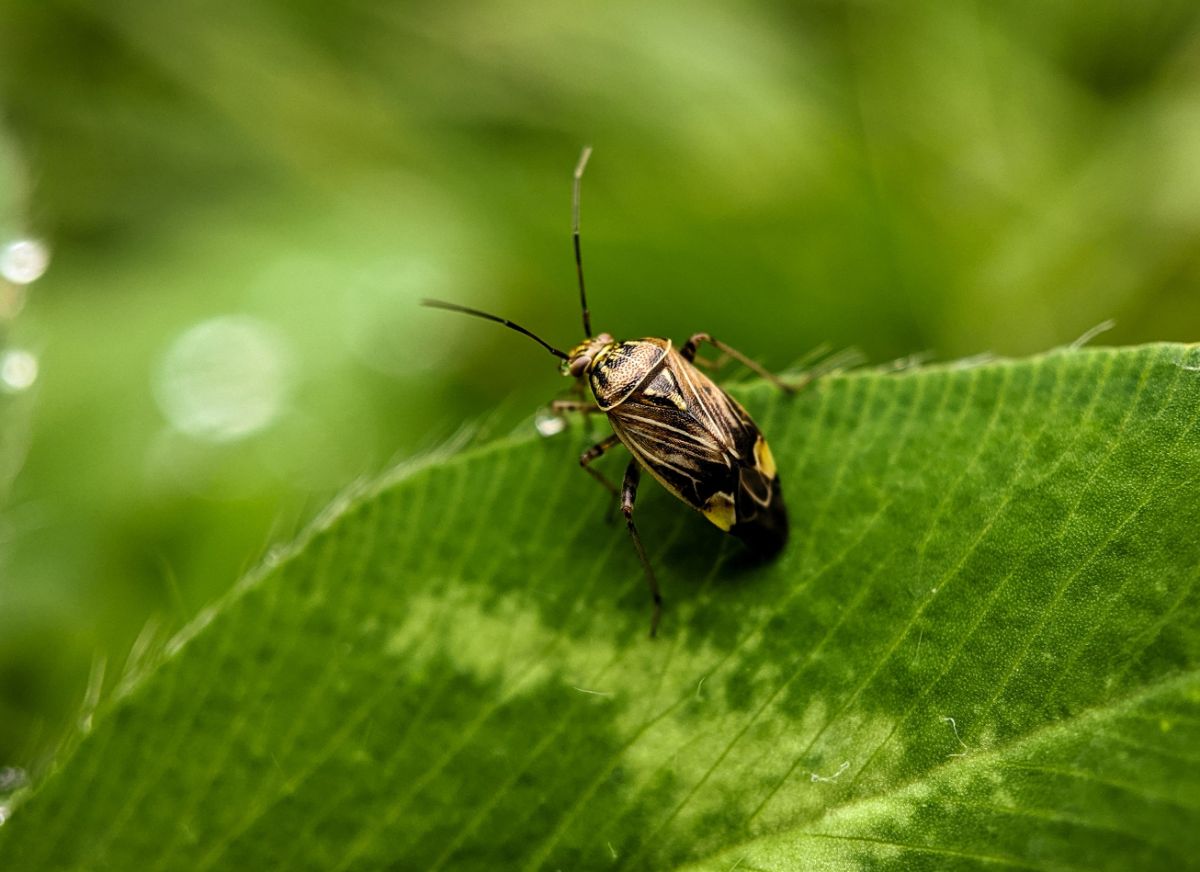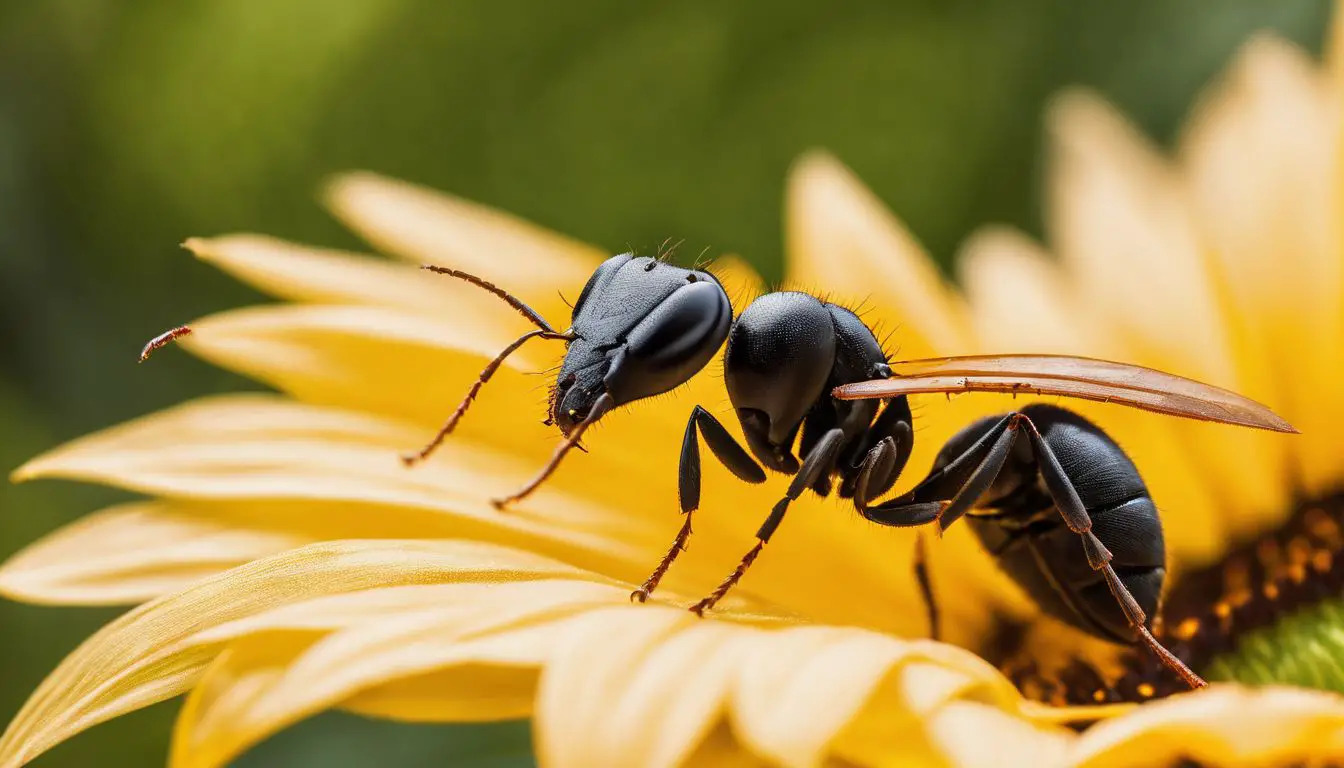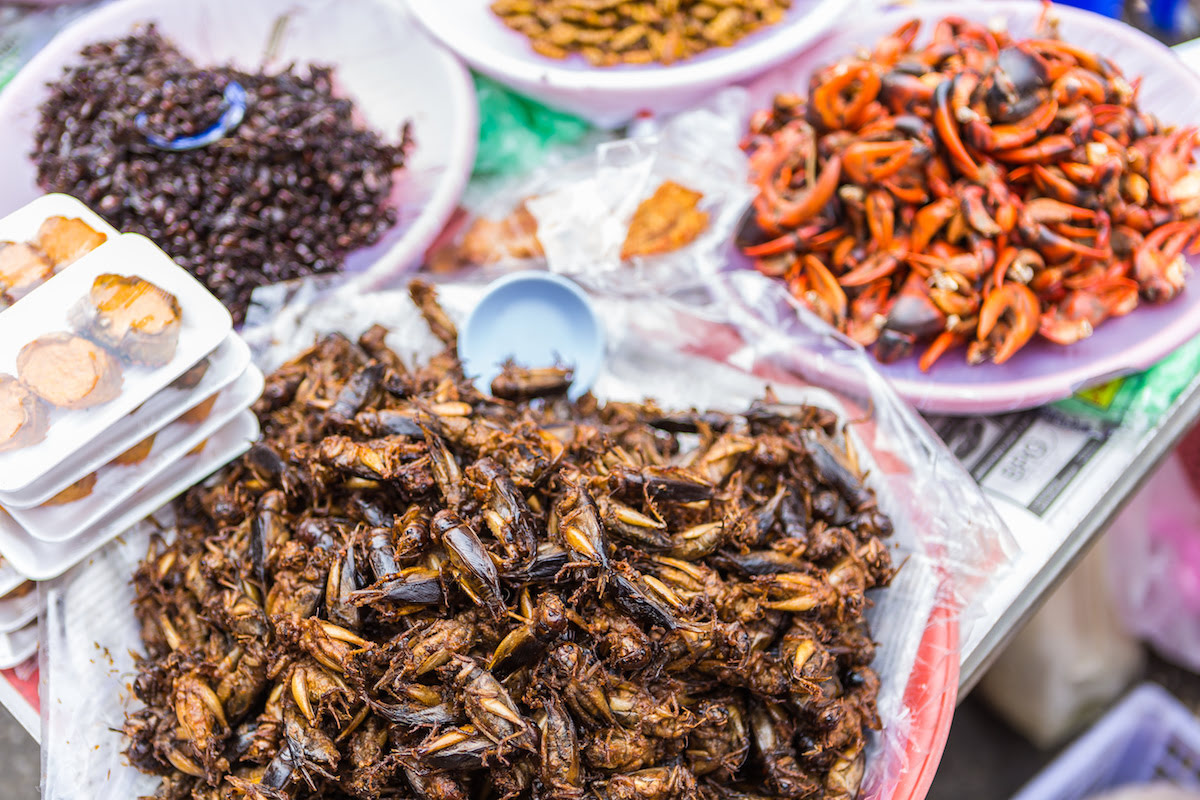Home>Gardening News and Trends>Latest News>What Insects Eat Clothes


Latest News
What Insects Eat Clothes
Published: December 2, 2023
Discover the latest news on what insects eat clothes. Find out how to protect your wardrobe and prevent damage caused by these pesky critters.
(Many of the links in this article redirect to a specific reviewed product. Your purchase of these products through affiliate links helps to generate commission for Chicagolandgardening.com, at no extra cost. Learn more)
Table of Contents
Introduction
Have you ever opened your closet or dresser to find holes in your favorite clothes? If so, you may have fallen victim to clothes-eating insects. These tiny pests can wreak havoc on your wardrobe, causing damage that can be difficult and expensive to repair.
It’s important to understand the common insects that are responsible for feasting on clothes. By identifying these culprits, you can take the necessary steps to prevent infestations and protect your beloved garments.
In this article, we will explore the common clothes-eating insects, the types of fabrics they target, the signs of infestation, and the most effective ways to prevent and eliminate these pests from your clothing.
From moths to beetles, there are several types of insects that are notorious for sneaking into our closets and devouring our clothes. While they may be small, their impact can be significant, leaving behind unsightly holes and damage. By understanding their behavior and habits, we can better protect our clothes from their destructive ways.
Additionally, certain fabrics are more vulnerable to insect damage than others. We will discuss which types of fabrics are most susceptible to infestations and provide tips to safeguard them from these unwanted visitors.
Recognizing the signs of an insect infestation on clothes is crucial in stopping the spread of damage. Whether it’s finding small holes, noticing webbing or casings, or discovering larvae, being able to identify these signals will allow you to take immediate action.
Prevention is key when it comes to protecting your clothes from insect damage. We will share various steps you can take to safeguard your wardrobe, such as regular cleaning, proper storage, and the use of repellents.
If you already have an infestation, fear not! We will explore natural and chemical methods to remove and eradicate clothes-eating insects from your garments. These methods will help you restore your clothes to their former glory and fend off future attacks.
So, if you want to keep your clothes in pristine condition and bid farewell to clothes-eating insects, join us as we delve into the world of these pesky pests and arm ourselves with knowledge to protect our beloved garments.
Common Clothes-Eating Insects
When it comes to clothes-eating insects, there are a few notorious culprits that can wreak havoc on your wardrobe. Let’s explore some of the most common ones:
- Clothes Moths: These small, winged insects are perhaps the most well-known clothes pests. The larvae of clothes moths, specifically the webbing and casemaking moths, are the ones responsible for the damage. They feed on natural fibers like wool, silk, cashmere, and fur. Clothes moths are particularly active in dark, undisturbed areas such as closets and storage boxes.
- Carpet Beetles: Carpet beetles are another common clothes-eating insect. These tiny oval-shaped beetles have a preference for natural fibers, including wool, silk, cotton, and feathers. However, they may also feed on synthetic materials if they are soiled with food or perspiration. Carpet beetles are attracted to light and are often found near windows or light sources.
- Silverfish: While not exclusively clothes pests, silverfish can still do damage to your garments. These small, silvery insects are attracted to items containing starch or proteins, such as glue, paper, and natural fibers like cotton and silk. They are commonly found in dark and humid areas, such as basements or attics.
- Crickets: Crickets are not only known for their chirping but also for their appetite for clothes. These jumping insects may chew on fabrics made of natural fibers like cotton, wool, or silk. Crickets are active at night and are often found in areas with moisture, such as laundry rooms or basements.
It’s important to regularly inspect your clothes for signs of these insects to catch infestations early on. By understanding their preferences and habits, you can take proactive measures to protect your garments and prevent extensive damage.
While these are some of the most common clothes-eating insects, it’s worth noting that there are other pests that can also cause damage to your clothes. By staying vigilant and implementing preventive measures, you can keep your wardrobe safe from these unwanted guests.
Types of Fabrics Most Susceptible to Insect Damage
While clothes-eating insects may target a variety of fabrics, there are certain types that are more vulnerable to insect damage. Understanding which fabrics are most susceptible can help you take proactive steps to protect them. Here are some fabrics that are often targeted by clothes-eating insects:
- Wool: Wool is a natural fiber that is highly attractive to clothes moths and carpet beetles. These insects are drawn to the keratin protein found in wool, making it a prime target for their feeding and breeding. If you have woolen garments or blankets, it’s essential to store them properly and regularly inspect for signs of infestation.
- Silk: Silk is another natural fiber that clothes moths and carpet beetles find irresistible. The protein-rich nature of silk fibers makes it an ideal food source for these insects. To protect your silk clothing and accessories, consider storing them in airtight containers or bags.
- Cotton: While cotton is less prone to damage than wool or silk, it can still be targeted by certain insects. Crickets, for example, may chew on cotton fabrics, especially if they are soiled or stained. Regularly laundering and storing cotton clothes in sealed containers can help prevent infestations.
- Fur: Clothes moths have a particular affinity for fur due to its animal origin. It provides them with ample nutrition and materials for their larvae to thrive. If you have fur coats or accessories, it’s crucial to store them properly and consider using natural repellents or hanging them in well-ventilated areas.
- Feathers: Feathers, commonly found in down jackets or pillows, can also attract clothes-eating insects. The organic matter in feathers makes them an attractive food source for pests like carpet beetles. Regularly airing out and cleaning feather-filled items is essential to deter infestations.
It’s important to note that synthetic fabrics, such as polyester or nylon, are less likely to be targeted by clothes-eating insects. However, if these fabrics are soiled with food or perspiration, they can still attract pests. Keeping all fabrics, both natural and synthetic, clean and properly stored is key to preventing infestations.
By understanding which fabrics are most susceptible to insect damage, you can take the necessary precautions to protect your clothes. Regular cleaning, proper storage, and inspection can go a long way in preserving your garments and reducing the risk of infestations.
Signs of Insect Infestation on Clothes
Recognizing the signs of an insect infestation on your clothes is crucial in order to address the issue before it becomes widespread. By identifying these signs early on, you can take swift action to prevent further damage. Here are some common signs to look out for:
- Visible Holes: One of the most obvious signs of a clothes-eating insect infestation is the presence of small holes in your garments. These holes are typically irregular in shape and can be found on various parts of the fabric. Be sure to inspect all your clothes regularly, especially those made from natural fibers.
- Webbing or Casings: Clothes moths, in particular, create silk webbing or casings as they feed and reproduce. These can often be found along the seams or folds of infested clothing. Webbing may appear as small clusters of silky fibers, while casings resemble cylindrical cases made of silk and fabric fibers.
- Larvae or Cocoons: If you spot small larvae or cocoons in your clothing, it is a clear indication of an infestation. Clothes moth larvae, for example, are small whitish caterpillar-like creatures that feed on fabric fibers. Carpet beetle larvae, on the other hand, are tiny and have a distinct hairy appearance.
- Presence of Insect Droppings: Insect infestations often leave behind telltale droppings. These droppings, also known as frass, may appear as small pellets or powdery substances on the fabric or in the corners of drawers and closets. These droppings can vary in color depending on the type of insect.
- Unusual Odors: Some clothes-eating insects, like carpet beetles, can produce an unpleasant odor as they feed and excrete waste. If you notice any strange or musty smells coming from your clothes or storage areas, it could be a sign of an infestation.
It’s important to note that not all signs of damage on clothes are caused by insects. Other factors like wear and tear, rough handling, or even improper storage conditions can also lead to similar damage. However, if you notice multiple signs of insect activity, it’s advisable to take immediate action to prevent further infestation and protect your clothes.
Regularly inspecting your clothes, especially those made from susceptible fabrics, is key in identifying any signs of insect infestation. Prompt action, such as quarantining infested items, cleaning affected clothes, and seeking professional help if necessary, can help preserve your wardrobe and prevent extensive damage.
Preventing Insect Damage to Clothes
Prevention is the key to protecting your clothes from insect damage. By implementing a few simple steps, you can significantly reduce the risk of infestations and keep your garments safe. Here are some effective measures to prevent insect damage to clothes:
- Regular Cleaning: Keeping your clothes clean is essential in deterring clothes-eating insects. Wash or dry clean your clothes before storing them, as residual food, perspiration, or stains can attract pests. Pay close attention to items that have been worn or stored in high-risk areas.
- Proper Storage: Storing your clothes correctly is crucial in preventing infestations. Use airtight containers or bags to store garments made from susceptible materials like wool, silk, or fur. This will create a barrier against pests and protect your clothes. For larger items like coats or dresses, consider using garment bags or hanging them in well-ventilated areas.
- Regular Inspection: Take the time to inspect your clothes regularly for any signs of infestation. Pay close attention to areas like collars, cuffs, and underarms, as these are more prone to insect damage. If you spot any signs of clothes-eating insects or damage, take immediate action to isolate and treat the affected items.
- Use Natural Repellents: Some natural repellents, such as cedar chips, lavender sachets, or dried citrus peels, can help deter clothes-eating insects. Place these repellents in your closets, drawers, or storage containers to create an environment that is less attractive to pests. However, it’s important to note that these repellents may not provide complete protection and should be used in conjunction with other preventative measures.
- Maintain a Clean Environment: Insects are attracted to dirt, dust, and food particles, so keeping your living spaces clean and free from clutter is essential. Vacuum regularly, particularly in areas where clothes are stored. Dust and clean drawers and shelves where clothes are kept, as well as the surrounding areas.
- Monitor Humidity Levels: Clothes-eating insects thrive in humid environments. Use dehumidifiers or moisture-absorbing products to maintain optimal humidity levels in closets and storage areas. A humidity level of around 50% is recommended to discourage insect breeding and growth.
- Rotate and Use Clothes: Regularly rotate the clothes in your wardrobe to ensure that all items are being used. Insects are more likely to target clothes that are undisturbed for long periods. Additionally, avoid storing clothes for extended periods without wearing or airing them out.
By following these preventative measures, you can significantly reduce the risk of clothes-eating insect infestations. Remember, prevention is always easier and more cost-effective than dealing with the aftermath of widespread damage.
Natural Methods to Remove Insects from Clothes
When it comes to removing clothes-eating insects from your garments, there are several natural methods you can try. These methods are effective in getting rid of pests without resorting to harsh chemicals. Here are some natural remedies to consider:
- Freezing: Freezing is an effective method for killing clothes-eating insects and their eggs. Place the infested clothing items in a sealed plastic bag and freeze them for a few days. The extreme cold temperature will eliminate the pests. Afterward, thoroughly clean and brush the clothes to remove any remains.
- Heat Treatment: Using heat is another way to kill clothes-eating insects. Place the infested clothes in a dryer on high heat for at least 30 minutes. The heat will effectively kill the pests and their eggs. Be sure to follow the clothing care instructions and avoid this method for delicate or heat-sensitive fabrics.
- Steam Cleaning: Steam cleaning is an effective natural method to kill clothes-eating insects and remove any remaining traces. Use a handheld steamer or a professional steam cleaner to treat the infested garments. The high temperature of the steam will kill the pests and help sanitize the clothes.
- Sunlight Exposure: Clothes-eating insects dislike sunlight and heat. Hang infested clothes outdoors on a sunny day to expose them to direct sunlight. The combination of sunlight and warmth will help in killing the pests. Be sure to turn and shake the clothes to dislodge any larvae or eggs.
- Essential Oils: Some essential oils, such as lavender, cedarwood, or neem oil, have natural insect-repellent properties. Create a mixture of water and a few drops of essential oil, then lightly spray it on your clothes or in your closet. This will help deter clothes-eating insects and keep them away from your garments.
- Vacuuming: Regular vacuuming can help remove clothes-eating insects and their eggs from your clothes and storage areas. Use a handheld vacuum or an attachment with a brush to carefully vacuum your clothes and the surrounding spaces. This will help eliminate any pests or eggs that may be present.
It’s important to note that while natural methods can be effective, they may not completely eradicate a severe infestation. In such cases, it’s recommended to seek professional help or consider chemical methods to ensure complete elimination of the pests.
By using these natural methods, you can effectively remove clothes-eating insects from your clothes while minimizing exposure to harsh chemicals. Remember to combine these methods with preventive measures to ensure long-term protection for your garments.
Chemical Methods to Get Rid of Clothes-Eating Insects
In cases where natural methods are insufficient or when dealing with severe infestations, chemical methods can be effective in getting rid of clothes-eating insects. Here are some common chemical treatments to consider:
- Insecticidal Sprays: Insecticidal sprays specifically designed for clothes-eating insects can be effective in eliminating these pests. Look for sprays that contain ingredients like pyrethrin or permethrin, as they have proven efficacy against clothes moths, carpet beetles, and other fabric pests. Follow the instructions on the label carefully and apply the spray directly to infested areas or the surrounding environment.
- Insecticidal Dusts: Insecticidal dusts can be used to treat cracks, crevices, and other hard-to-reach areas where clothes-eating insects may hide. Apply the dust into cracks and voids in closets, drawers, and baseboards. It is important to wear gloves and a mask during application, and keep the treated areas well ventilated.
- Mothballs and Moth Crystals: Mothballs and moth crystals, typically containing naphthalene or paradichlorobenzene, are widely used to repel clothes moths and other fabric pests. Place these repellents in sealed containers or cloth bags with infested or vulnerable garments. However, it’s crucial to use them with caution and in well-ventilated areas, as they can release strong fumes that may be harmful if inhaled in excessive amounts.
- Pest Strips: Pest strips can be effective in controlling clothes-eating insects, especially in enclosed spaces like closets or storage areas. Hang the strips in the affected area, following the instructions provided. Ensure proper ventilation to avoid prolonged exposure to the chemicals.
- Fumigation: In severe infestations or cases where other methods have failed, professional fumigation may be necessary. Fumigation involves sealing the infested area and introducing a gaseous pesticide to eradicate all stages of clothes-eating insects. This method is highly effective but should only be handled by professionals trained in fumigation procedures.
When using chemical methods, it’s vital to carefully read and follow the instructions provided by the manufacturers. Take necessary safety precautions such as wearing protective gloves, masks, and avoiding direct skin contact. Keep in mind that chemical treatments can be harmful to humans and pets, so it’s crucial to use them responsibly and judiciously.
If you are unsure about handling chemical treatments or dealing with a severe infestation, it is advisable to consult a professional pest control expert. They can provide guidance, assess the extent of the infestation, and recommend the most appropriate treatment for effective elimination of clothes-eating insects.
Conclusion
Clothes-eating insects can wreak havoc on our cherished garments, causing damage that can be costly and difficult to repair. However, by understanding the common clothes-eating insects, recognizing the signs of infestation, and implementing preventive measures, we can protect our clothes and preserve their longevity.
From clothes moths to carpet beetles, these tiny pests target various fabrics, with natural fibers like wool and silk being particularly vulnerable. Regular inspection, proper cleaning, and storing clothes in airtight containers or bags can go a long way in preventing infestations.
By staying vigilant and proactive, we can quickly address any signs of an infestation, such as visible holes, webbing or casings, larvae or cocoons, insect droppings, or unusual odors. Regular cleaning, heat treatment, freezing, and steam cleaning are effective natural methods to remove clothes-eating insects from our garments.
In cases where natural methods are not sufficient, chemical treatments like insecticidal sprays, mothballs, or fumigation may be necessary. However, it is important to follow safety instructions, use these chemicals responsibly, and minimize exposure to humans and pets.
In conclusion, by being aware of clothes-eating insects and implementing preventive measures, we can protect our clothes from damage and ensure they stand the test of time. Regular inspection, cleaning, proper storage, and utilizing natural or chemical methods as needed will help us safeguard our beloved garments and enjoy them for years to come.
